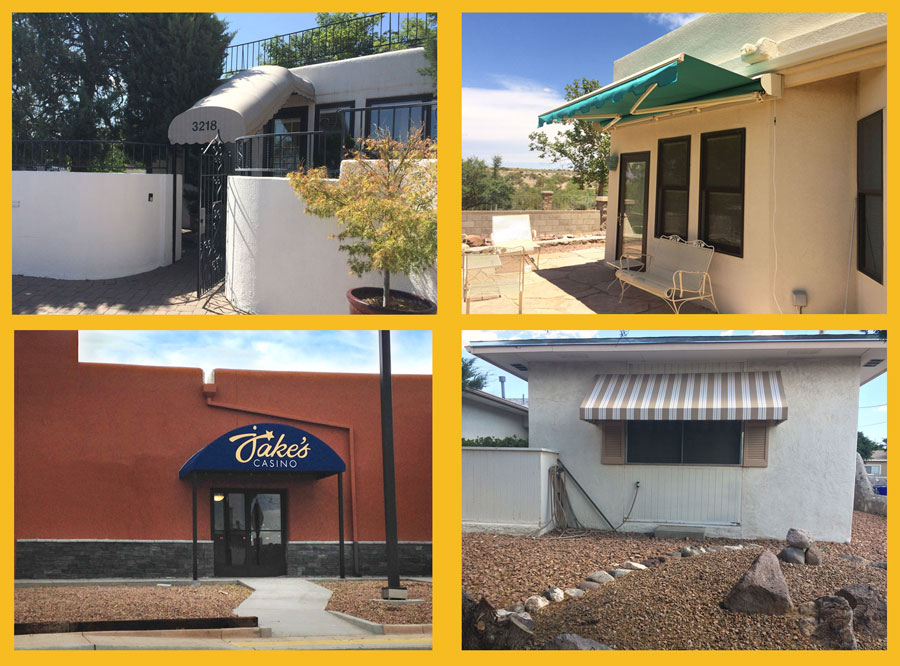Awning Designs
We’re going to mix it up a bit by showing you 4 variations of awning installations to illustrate how best to cover an entryway or window area. There are endless choices in style and design, but what ultimately determines the best decision is the structure of the building from which the awning will be mounted.

Box awnings work extremely well over windows on single storey or multiple storey buildings as they cover not only the upper section of a window, but also enclose the outer corners which prevents heat and harsh sunlight penetrating the interiors throughout most of the day. The frame is bolted directly to the exterior wall and is typically mounted several inches above the rim of the window frame to allow the best coverage. In situations where it is appealing to be able to adjust awning coverage, retractable and drop arm awnings offer flexibility with both manual and remote controls. In high winds and very blustery weather conditions, it is recommended that these awnings be retracted all the way to prevent potential damage to the mounts and arms.
Domed and arched awnings are a great solution to covering doors and entryways. The juxtaposition of a rounded profile against flat walls and rectangular doorways softens the look of the entryway and is more inviting to visitors. Rounded awnings also direct the flow of water from rain to the sides, less than the front where foot traffic passes underneath. Domed awnings are typically constructed on a custom rounded frame, and arched awnings generally require exterior posts at the outer corners for support. However, an arched awning can also be an extended style that will necessitate outer supports too. Domed and arched awnings tend to look dressier, and while they are most often used for commercial buildings, they can be very effective and appealing to complement the architecture of private homes as well.
